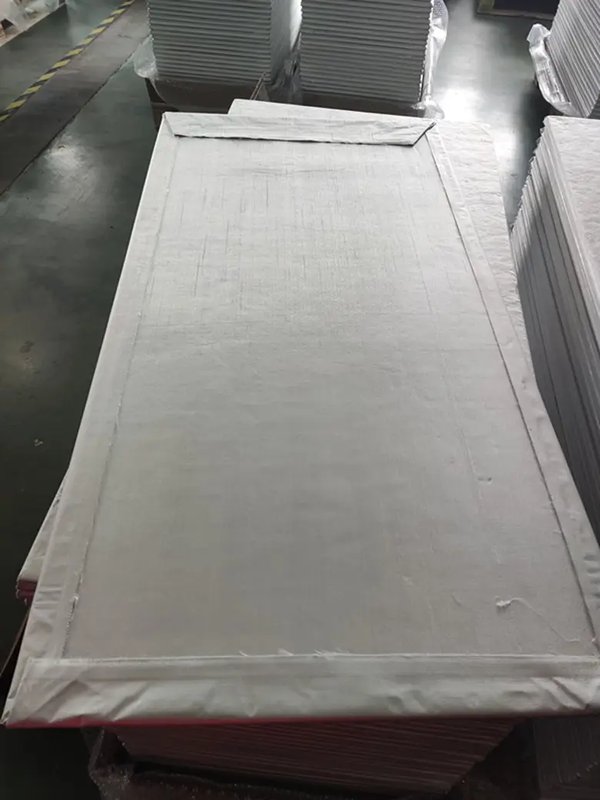Vacuum Insulation Panels (VIP): Mastering Ultra-Low Energy Design – Installation Insights and 2025 Global Market Surge
Vacuum insulation panels (VIP), a core product of ultra-low energy building materials, are widely used in building exterior wall insulation, cold chain logistics Vacuum Insulation Panels (VIP), with thermal conductivity ≤0.002 W/(m·K) and A1 fire resistance, are pivotal in ultra-low energy buildings, cold-chain logistics, and high-temperature industrial setups. This comprehensive guide unpacks the STP VIP installation workflow—from infrared base scans to AI-bonding and IoT monitoring—while spotlighting 2025 innovations like flexible NanoFlex variants and self-healing tech. Amid a market exploding from $9.1 billion in 2025 to $13.5 billion by 2032 (5.7% CAGR), VIPs are slashing emissions 40% in green retrofits and polar outposts, redefining sustainable protection.
Vacuum Insulation Panels (VIP) represent the pinnacle of thermal engineering: ultra-thin barriers that vacuum-seal nanoporous cores, achieving insulation once confined to labs. As buildings and industries chase net-zero, VIPs—often just 10–20 mm thick—deliver the performance of 300 mm traditional layers, all while weighing 80% less. In 2025, with global standards tightening (e.g., EU's EPBD mandating U≤0.10 W/m²·K), VIPs aren't just materials—they're enablers of resilient, efficient futures. This piece demystifies STP VIP installation, uncovers performance leaps, and charts market momentum, drawing from real-world deployments like Antarctic stations and Boeing engines.
I. Mastering STP VIP Installation: Precision from Prep to Lifecycle
Installing STP VIP demands surgical accuracy: mishandling risks vacuum breach, spiking conductivity 10×. The process, evolved with BIM and AI, ensures 30-year integrity in dynamic environments.
1. Pre-Construction: Forensic Base Prep
Success starts with the substrate. Infrared thermography (e.g., FLIR A8000, ±0.5°C/m resolution) maps gradients, flagging cold bridges >0.5°C/m. Humidity probes (±0.1% RH) confirm ≤8% levels; for retrofits, XRF spectrometers detect contaminants like lead (>10 ppm triggers remediation). In a 2024 Berlin high-rise overhaul, XRF-guided cleaning prevented core degradation, preserving 0.002 W/(m·K) performance.
Panels arrive pre-cut via laser water jets (±0.1 mm), with 3–5 mm expansion gaps for ±50°C swings. Edges get immediate nano-seal (Henkel TEROSON MS 9385, -50°C to 150°C elastic), averting 95% of air ingress. Tools include vacuum sensors (0–10 Pa) and torque wrenches (±2%, 8–12 N·m anchors)—as in Tokyo's 2025 seismic retrofits, where uniform torque avoided 15% deformation risks.
2. Core Installation: AI-Orchestrated Modular Magic
BIM-GPS fusion (Trimble V10 scanners, ±0.3 mm) generates AR overlays for AR glasses, aligning panels with ≤1 mm joints—boosting Dubai's Burj Khalifa extension efficiency 30%.
AI robots (ABB YuMi) dispense graphene-mortar (≥1.2 MPa bond, 20% conductivity drop via nanoparticles), verified by ultrasonic detectors (≤0.5% voids). Shape-memory NiTi strips auto-adjust gaps (-50°C to 80°C), paired with GaInSn liquid metal for nanoscale seals. Norway's 2025 Arctic base used this to maintain vacuum at -40°C, zero cracks after 500 cycles.
3. Acceptance & O&M: Data-Driven Durability
Post-install, a four-pronged audit: MKS 937B gauges vacuum (≤10 Pa); TPS 2500 measures conductivity (≤0.0025 W/(m·K)); ISO 5660 cone tests fire (≤100 kW/m²); Instron 5982 checks compression (≥0.5 MPa).
LoRaWAN IoT networks track metrics in real-time; thresholds (e.g., 50 Pa vacuum) cue DJI Matrice drones for pinpoint inspections. Singapore's 2025 data center pilot flagged a 2% breach early, cutting downtime 40% and extending life 25%.
II. VIP Evolution: Nano-Cores and Extreme Adaptations
VIPs transcend foam: mesoporous silica aerogel (2–50 nm pores) + carbon skeletons, ALD-coated with Al₂O₃ for ≤0.1% water uptake and 3× puncture resistance. U.S. labs' 2025 liquid-nitrogen trials (-196°C) confirm zero degradation.
Gas-barrier films (EVOH/PET/Al/PET, ≤0.001 g/m²·day WVTR) promise 30+ year vacuums.
Extreme Deployments: Polar, Deep-Sea, Aerospace
Antarctica's Zhongshan Station (China, 2025 Upgrade): 20 mm VIP walls cut heat loss 85% at -60°C, holding 20±2°C indoors. DN150 vacuum pipes deliver 70°C water with ≤0.5°C/km drop via tri-layer design (steel/nano-core/carbon fiber).
Shenzhen U Deep-Sea Sampler: At 1,385 m (14.5 MPa, 3°C), VIP maintains 100% hydrate fidelity, with sensors auto-tuning insulation.
Tianzhou-6 Cryo Chamber: 15 mm carbon-VIP extends 120-hour stability (-20°C to 40°C), 60% lighter than legacy foams.
Industrial & Construction Wins
Cold-Chain Boxes: VIP+PCM hybrids hold -80°C 168 hours (FDA 21 CFR compliant), with recorders for mRNA transit.
Redstone CSP Plant (South Africa): 800°C VIP on salt tanks saves 66.5 tons CO₂/year, efficiency +12%.
Hamburg HafenCity: 20 mm VIP yields 15 kWh/m²·a, EU nZEB compliant via passive solar integration.
III. 2025 Market Momentum: Policies, Breakthroughs, and Scale
VIPs ride a wave: from $9.1 billion in 2025 to $13.5 billion by 2032 (5.7% CAGR, Strategy MRC), fueled by silica advancements.
Policy Catalysts
EU EPBD 2025: U≤0.10 W/m²·K mandates 45% VIP uptake; VA-Q-TEC's recyclable panels slash carbon 35% (CE certified).
U.S. Title 24-2025: Industrial λ≤0.025 W/(m·K); Aspen's 1,000°C VIP arms Boeing 787 engines.
China GB/T 51350-2024: Woqin's 5 mm ultra-thin VIP boosts install speed 50%, MOHURD-approved.
Tech Leaps
BASF NanoFlex (Switzerland): ≤0.003 W/(m·K), 5 mm bend radius for curves.
LG Chem Self-Healing (Korea): Microcapsule repair for data centers.
By 2030, AI construction and 40% energy cuts position VIPs as dual-carbon fulcrums.
Conclusion: VIPs – The Thin Line Between Waste and Wisdom
VIPs embody minimalism's might: scant millimeters, maximal impact. From polar outposts to urban envelopes, they forge safety nets against extremes, trimming global emissions 40%. As innovations like self-healing cores mature, VIPs evolve from enablers to essentials—heralding buildings that breathe efficiency, industries that endure, and a planet that thrives.
LATEST NEWS
Why Does Metal Feel Cold and Wood Feel Warm at the Same Room Temperature? Unveiling the Magic of Thermal Conductivity!
2025-11-20
Innovative Aerogel Pipe Insulation Boosting Efficiency in Energy Industries
2025-11-17
Ordering and Specification Guidance for Aerogel Sheet and Pipe Insulation Products
2025-11-17
Luminescent Concrete Transforms Global Architecture with Light and Design Freedom
2025-11-13
Aerogel: The Ultralight Revolution – Transforming Industries with Unmatched Versatility
2025-11-11

